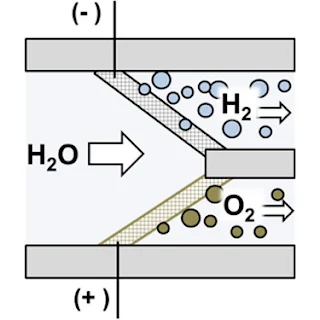Wednesday, September 30, 2020
Generating Renewable Hydrogen Fuel from Sea Water May Be Possible
The power of the sun, wind and sea may soon combine to produce clean-burning hydrogen fuel, according to a team of Penn State researchers.
The team integrated water purification technology into a new proof-of-concept design for a sea water electrolyzer, which uses an electric current to split apart the hydrogen and oxygen in water molecules, Phys reported.
This new method for "sea water splitting" could make it easier to turn wind and solar energy into a storable and portable fuel, according to Bruce Logan, Kappe Professor of Environmental Engineering and Evan Pugh University Professor.
"Hydrogen is a great fuel, but you have to make it," Logan said. "The only sustainable way to do that is to use renewable energy and produce it from water. You also need to use water that people do not want to use for other things, and that would be sea water. So, the holy grail of producing hydrogen would be to combine the sea water and the wind and solar energy found in coastal and offshore environments."
Despite the abundance of sea water, it is not commonly used for water splitting. Unless the water is desalinated prior to entering the electrolyzer—an expensive extra step—the chloride ions in sea water turn into toxic chlorine gas, which degrades the equipment and seeps into the environment.
To prevent this, the researchers inserted a thin, semipermeable membrane, originally developed for purifying water in the reverse osmosis (RO) treatment process. The RO membrane replaced the ion-exchange membrane commonly used in electrolyzers.
"The idea behind RO is that you put a really high pressure on the water and push it through the membrane and keep the chloride ions behind," Logan said....(TASNIM)
Subscribe to:
Post Comments (Atom)

Oil producer Royal Dutch Shell announced Wednesday it will lay off thousands of workers by the end of 2022 as part of a step toward renewable energy.
ReplyDeleteThe job cuts, which Shell said could number 9,000, represent more than 10% of the company's workforce and include about 1,500 who have volunteered to be part of the reduction, the company said in a third quarter update.